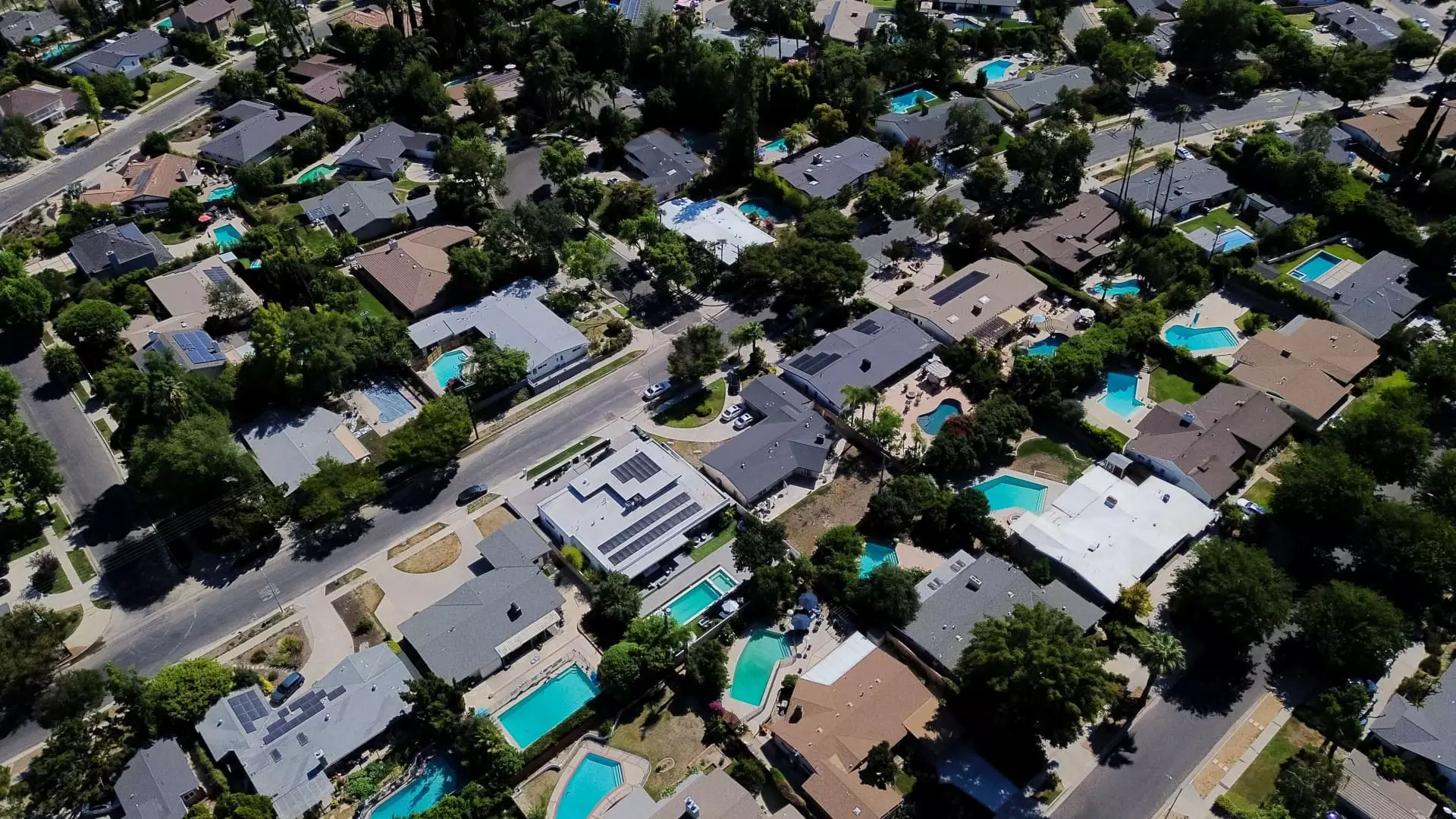The recent decline in existing home sales, strikingly larger than analysts predicted, reveals more than just a sluggish housing market; it exposes a system that’s increasingly fractured and inaccessible to the average American. While the raw data suggests a minor 2.7% drop from May, the underlying narrative paints a stark picture of a market in distress—where soaring mortgage rates strangulate potential homebuyers, leaving countless Americans trapped in rent and instability. This isn’t merely a cyclical lull; it’s a symptom of a broader imbalance rooted in systemic neglect and economic disparity.
Mortgage rates hovering near 6.8%–a level unseen in over a decade—are a formidable barrier that prevents many from taking the leap into homeownership. Lawrence Yun, the chief economist of the National Association of Realtors, highlights a bleak reality: if rates dip below 6%, we could see hundreds of thousands more first-time buyers entering the market. However, current monetary policy and inflation pressures continue to keep borrowing costs high, effectively pricing out those with modest incomes. This isn’t just market fluctuation; it’s a deliberate squeeze on middle- and working-class Americans, who are increasingly pushed to the margins of homeownership and economic stability.
The supply side of the equation reveals further despair. The rise to 1.53 million homes for sale, a 15.9% increase from last year, might seem positive on paper. But in reality, it signifies a sluggish inventory—4.7 months’ worth at current sales rates—well below the balanced six months that indicate a healthy market. This tightness sustains high prices and hinders affordability. Meanwhile, new construction languishes due to skyrocketing material costs and zoning restrictions, further exacerbating an undersupply that fuels the record-setting median price of over $435,000. This relentless increase not only distances young and first-time buyers from owning a home but also inflates existing homeowners’ wealth—by a staggering $140,900 over five years—highlighting growing wealth disparity fueled by real estate.
Whose Market Is It Really?
The market’s apparent resilience at the higher end underscores a troubling dynamic: wealth is increasingly concentrated among those already advantaged. Homes priced above $1 million surged by 14%, reinforcing a trend of luxury sales outperforming the broader market. Meanwhile, affordable housing—those below $100,000—shrinks by 5% annually. This bifurcation isn’t accidental; it’s a direct consequence of policies that favor capital over community, favoring luxury developers and investors over low-income families seeking stability.
The devaluation of first-time buyers, who now constitute only 30% of purchasers, down from a more typical 40%, is a telling sign of how out of reach homeownership has become. The market’s favoring of all-cash deals—comprising 29% of sales—further illustrates the shift toward wealthier investors who can bypass the traditional mortgage process altogether. As bidding wars decline slightly from recent peaks, it’s clear that the luxury and investor segment of the market is still highly active, leaving first-time and middle-income buyers on the sidelines.
Another stark indicator of inequality is the lengthening time homes spend on the market—an average of 27 days compared to 22 last year—especially in the lower-priced tiers. If homes take longer to sell, it indicates a cooling for regular buyers, while the affluent continue to transact swiftly. This stark divergence signals an unbalanced market—an arena increasingly tilted in favor of the wealthy, while ordinary Americans struggle to find affordable options or secure financing due to high interest rates.
Confronting the Broader Consequences
This mosaic of data paints a grim picture: a housing ecosystem where affordability is deteriorating, supply is sluggish, and wealth is accumulating at the top. For those advocating center-left liberal policies, this is a call to action—an acknowledgment that market forces alone are insufficient to rectify centuries of systemic injustice. Investments in affordable housing, reforming zoning laws, and policies to reduce mortgage costs are urgent. Without deliberate intervention, the gap between the haves and have-nots will only widen, deepening social divides and undermining the very fabric of a fair society.
The housing crisis isn’t just about real estate; it’s about economic opportunity, community stability, and social equity. When millions remain renters by necessity, their economic mobility stagnates, and the cycle of poverty persists. The government must step in—not just to stabilize markets, but to fundamentally reshape the landscape to be more inclusive, sustainable, and just. Anything less is a neglect of the core values of fairness and opportunity that should underpin a truly democratic society.

Leave a Reply